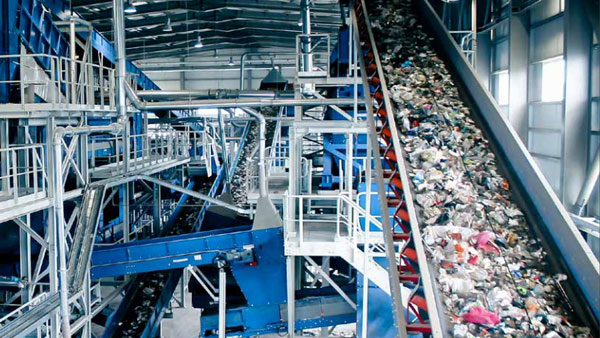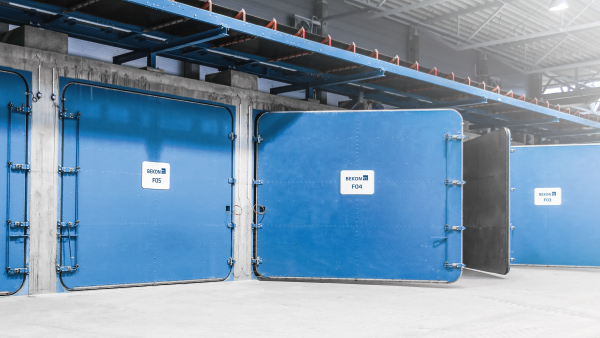Processing of Paper, Cardboard and Cartons
The production of paper, cardboard and paperboard packaging requires fibres that are best obtained from wood fibre – consistent recycling therefore directly protects the world's tree population. Recycling thus becomes active climate protection.
Why is Sorting Necessary?
The quality of the waste paper fraction determines the possibilities for reuse and thus also significantly the value of the material. Various factors are decisive for the quality, such as the proportion of impurities (staples, etc.), adhesives or varnish. The most important aspect, however, is the condition of the fibre. Fibre losses always occur during processing and use, and fibre shortening occurs, which increasingly reduces the quality. Therefore, the production of high-quality paper inevitably requires a corresponding supply of fresh fibres. Even paper made from 100 % recycled waste paper cannot be produced from any type of waste paper.
For a uniform overview, the European Union has defined different grades for recovered paper (European Standard 643:2014-05 95). They are subdivided into five main groups, with many further subcategories:
- Group 1: Lower types - (11 types with further subcategories)
- Group 2: Medium types - (14 types with further subcategories)
- Group 3: Better types - (20 types with further subcategories)
- Group 4: Vigorous types - (8 types with further subcategories)
- Group 5: Special types - (14 types with further subcategories)
An example: For some further processing, the waste paper must first be freed from printing ink (de-inking). For this process, the grade "1.11.00 Deinkingware" from group 1 is intended. In order to be classified as deinked pulp, the fraction must consist of at least 80 % graphic paper (ratio of at least 30 % newspapers to 40 % magazines), it may only contain a maximum of 1.5 % of components unsuitable for deinking as well as 0.5 % non-paper components and 2.5 % unwanted materials.
In order to process the waste paper fraction according to such strict quality classes, a precise recycling process is required.
How Does the Processing of Waste Paper Work?
Our sorting systems for paper, cardboard and cardboard packaging ensure pure end products in the required qualities. As soon as the waste paper fraction is fed onto the sorting line, a BRT HARTNER Feed and Metering Hopper with moving floor conveyor, frequency-controlled metering unit and volume flow control ensures uniform feeding of the downstream units.
Large cardboard and cartons are then separated. This can be done by our compact Disc Screens (Rotor Screens) or by the BPS Paper Sorters – a special version of our ballistic separators. All screens or separators divide the material flow into a fine paper fraction, a mixed paper fraction as well as a cardboard and carton fraction in several stages.
In the disc or rotor screens, the so-called rotor elements – rotating axles with oval discs – set the material in an up-and-down motion, making it "flow" over the screen. Large, dimensionally stable components of the material (cardboard and paperboard) are moved upwards over the entire screen deck to the discharge edge, while smaller and more flexible materials (mixed paper with fine particles) fall through the screen discs. The fine particles and small impurities are removed from the mixed paper by a fine screen. This also has rotor elements, but with smaller steel discs.
BSC SF Disc Screen:
As with the BS Ballistic Separators, the functionality of the special BPS Papersorters is based on the up and down movement of the rotating paddles arranged side by side. Unlike the BS Ballistic Separators, there is no 3D discharge and the decks are arranged in cascades to rotate the material.
The ballistic separator for coarse separation segregates the material into two fractions. Mixed paper falls through the openings of the paddles. Cardboard and paperboard move upwards to the discharge point due to their size and stiffness. Used as a fine screen, the BPS paper sorter has paddles with smaller openings in the screen surfaces. The fines and small impurities fall through these openings. The screen surfaces can also be exchanged later if necessary.
In all ballistic separators, the vertical acceleration mixes the material very thoroughly, which results in good separation and a high separation quality. The design with several screen decks in a row supports the effectiveness. Ballistic separators are the best alternative to disc or rotor screens. They are almost free of tangles, easy to maintain and flexible in use.
BPS Ballistik Separator:
For high purities in the product and for further classification, e.g. into grey, brown and printed cardboard, near-infrared detection systems are used which separate the pre-programmed fractions by means of compressed air. Other interfering materials with larger dimensions (e.g. foils or similar) can be removed in a downstream manual sorting cabin. The individual fractions are temporarily stored in bunkers after sorting and can be pressed into bales at the end of the process.
Downloads
Transform Your Waste

BEKON Dry Fermentation

Contact
Contact us today! We are happy to support you in solving your waste problem!

Gunnar Beyer
Head of Sales
Eggersmann Anlagenbau
Recycling Plants
Fon +49 5734 6690-227

Andre Berlage
Executive Manager
BRT HARTNER
Stationary Machines
Fon +49 5451 50773-31
Cell +49 160 90693161